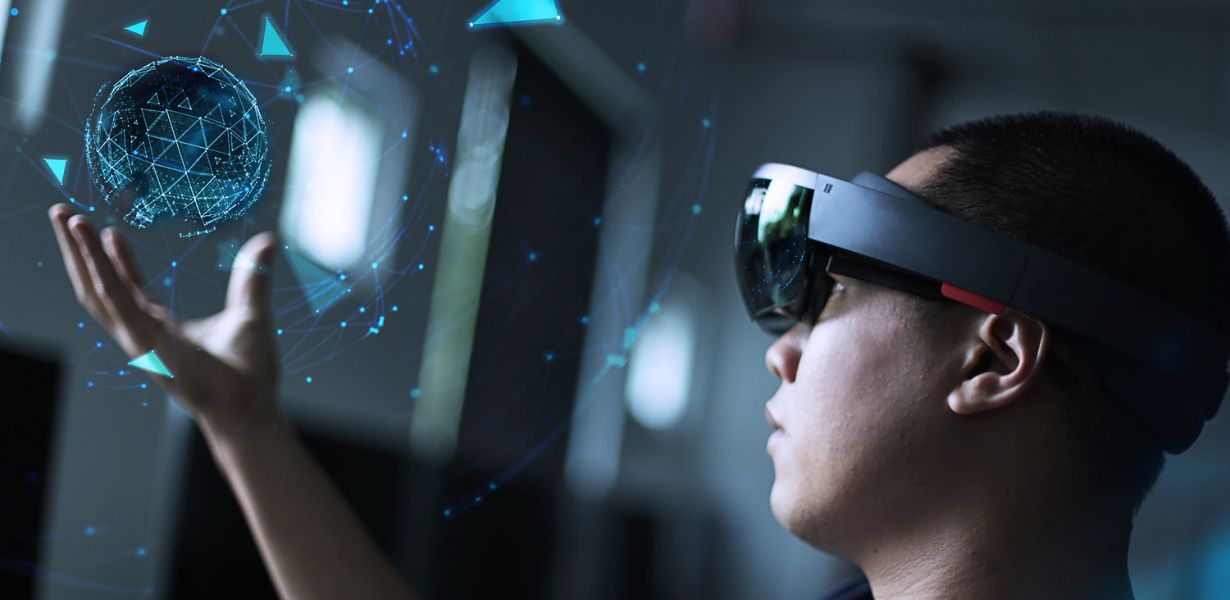
From Holograms to Haptics: Gradients Redefining Immersive Tech Experiences
- Post
- August 7, 2023
- Gradients, Web Design, Web Design Trends
- 0 Comments
In the fast-paced world of technology, continuous innovation has led to groundbreaking advancements. From holograms that blur the lines between reality and fiction to haptics that allow us to feel digital environments, immersive tech has evolved by leaps and bounds. Amidst these developments, one particular element is redefining the way we experience digital content – gradients. In this blog, we delve deep into the captivating world of gradients in immersive tech, exploring their impact on website design, backgrounds, and beyond. Join us on this exciting journey as we unravel the magic of gradients and their role in shaping unforgettable user experiences.
Understanding Gradients: A Palette of Possibilities
Gradients, the gradual transition of colors, are a powerful visual tool that adds depth and dimension to design. They have found their way into various aspects of immersive technology, captivating users with their artistic charm. From vibrant and striking hues to subtle and soothing blends, gradients offer a versatile palette of possibilities for designers to create captivating visuals that engage and delight.
The Allure of Gradient Website Templates
The popularity of gradient website templates has surged in recent times, and for good reason. These templates bring together the elegance of gradients and the convenience of pre-designed layouts, making it easier for businesses and individuals to create stunning websites with minimal effort. With the ability to customize colors and styles, these templates offer a perfect blend of aesthetics and functionality.
Enhancing User Interfaces with Gradients
Gradients have become an indispensable element in modern user interface (UI) design. Their seamless integration in UI elements such as buttons, icons, and backgrounds adds a touch of sophistication and harmony to digital products. Gradients contribute to enhancing user experience by guiding attention, providing visual cues, and creating a sense of depth and interactivity.
Immersive Backgrounds: Gradient’s Visual Symphony
In the realm of immersive experiences, backgrounds play a pivotal role in setting the stage for captivating encounters. Gradients have emerged as a favorite choice for designers looking to create mesmerizing backgrounds that draw users into an enchanting visual symphony. Whether it’s a subtle gradient that complements the content or a bold one that steals the spotlight, backgrounds infused with gradients add a layer of enchantment to the immersive tech landscape.
The Science Behind Haptics: Touching the Digital World
While gradients delight the eyes, haptics appeal to our sense of touch, taking immersive tech to new heights. Haptics technology enables users to feel the digital environment through tactile feedback, opening up a world of possibilities in virtual and augmented reality experiences. The combination of gradients and haptics promises a multisensory journey that blurs the line between the real and the virtual, offering a holistic and engaging encounter.
Crafting Emotional Connections with Gradients
Colors evoke emotions, and gradients masterfully leverage this aspect to create emotional connections with users. From calming gradients that exude serenity to energetic ones that evoke excitement, designers can wield the emotional power of gradients to craft unforgettable user experiences. By resonating with users on an emotional level, immersive tech experiences become more immersive and impactful.
Dynamic Gradients: Unveiling the Motion
Static gradients are captivating, but dynamic gradients take the experience to a whole new level. By introducing motion and animation, dynamic gradients breathe life into designs, creating a sense of fluidity and enchantment. These captivating visual effects elevate immersive tech experiences and leave a lasting impression on users.
The Future of Gradients in Immersive Tech
As technology continues to advance, the potential of gradients in immersive tech seems boundless. With the ongoing convergence of virtual reality, augmented reality, and mixed reality, gradients will likely play an even more significant role in shaping how we interact with digital content. The seamless integration of gradients and haptics could unlock a new era of multisensory experiences, blurring the boundaries between the real and the digital.
Final Words
In the ever-evolving landscape of immersive tech, gradients stand tall as a creative force that transcends boundaries and enhances user experiences. From the canvas of websites to the fabric of backgrounds, gradients weave a tapestry of visual delight that captivates and engages. As we journey into the future, let us embrace the enchanting synergy of gradients and immersive tech, and witness the magic they unfurl.
Commonly Asked Questions
1. How do gradients contribute to better user experiences in website design?
Gradients offer a visually pleasing transition of colors, guiding users’ attention and adding depth to UI elements. This contributes to better user experiences by creating an engaging and harmonious interface.
2. Can gradients be used in combination with haptics to enhance immersive experiences?
Absolutely! The combination of gradients and haptics adds a new dimension to immersive tech experiences. Gradients captivate visually, while haptics engage users’ sense of touch, creating a multisensory encounter.
3. Are there any ready-to-use gradient website templates available for customization?
Yes, there are numerous gradient website templates available online that offer the perfect balance of aesthetics and functionality. These templates allow users to customize colors and styles to suit their brand identity.
4. How can dynamic gradients elevate the appeal of immersive tech experiences?
Dynamic gradients introduce motion and animation, infusing designs with fluidity and enchantment. This motion captivates users, making the immersive tech experience more dynamic and memorable.
5. What does the future hold for gradients in the immersive tech landscape?
With the ongoing advancement of technology, gradients will likely continue to play a pivotal role in immersive tech. Their seamless integration with haptics could unlock new dimensions of multisensory experiences, transforming how we interact with digital content.




